Samovars originated in Russia, but are also very popular in the Middle East and Europe. Assyrian homemade sugar cubes, known as "Shakar De Shlama", are usually served with samovar tea.
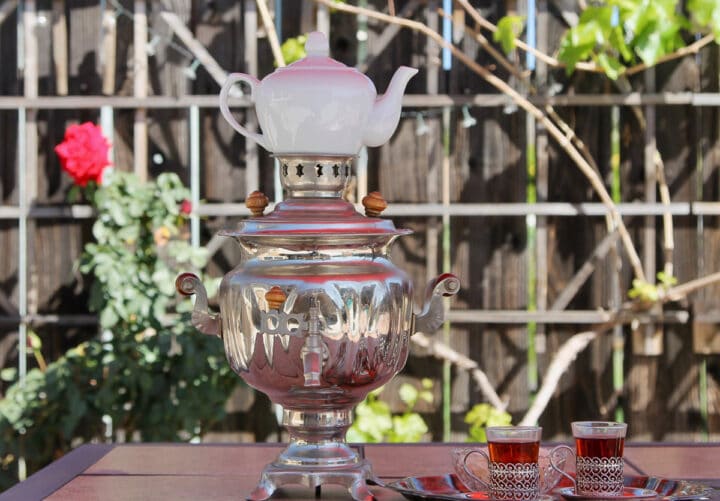
Assyrians pronounce "samovar" as "see-maw-war." A samovar can be described as a metal container or urn that is used to boil water for tea. A teapot containing loose tea is placed on top of the samovar (known as the crown).
When the water comes to a boil, some of it is used to fill the teapot, which is then placed back on the crown.
The tea is allowed to steep for fifteen minutes or more. When the samovar tea is ready to serve, each person can customize their tea with a ratio of tea concentrate and hot water, based on how strong or weak they like their tea.
To make samovar tea, you can use Middle Eastern tea or Russian Ivan tea.
Jump to:
What is a Samovar?
A samovar is a traditional vessel used to heat and boil water, particularly for making tea. It is most commonly associated with Russia, Central Asia, and parts of the Middle East. The word "samovar" roughly translates to "self-boiler" in Russian.
Samovars are symbolic of hospitality and communal gatherings in Russia and the Middle East. In Russia, they became a centerpiece of social life, particularly during the 18th and 19th centuries.
It includes a spigot or tap near the bottom for dispensing hot water. A chimney or compartment at the center houses a heat source, traditionally burning coal or wood. This made them portable, which made them perfect for serving tea at outdoor gatherings and picnics.
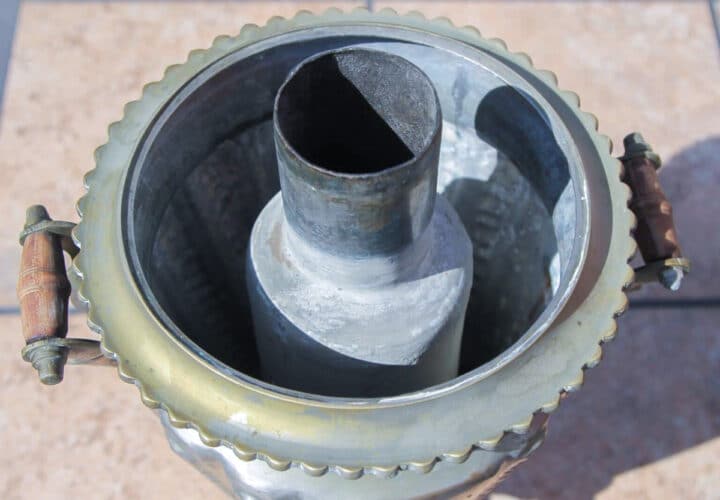
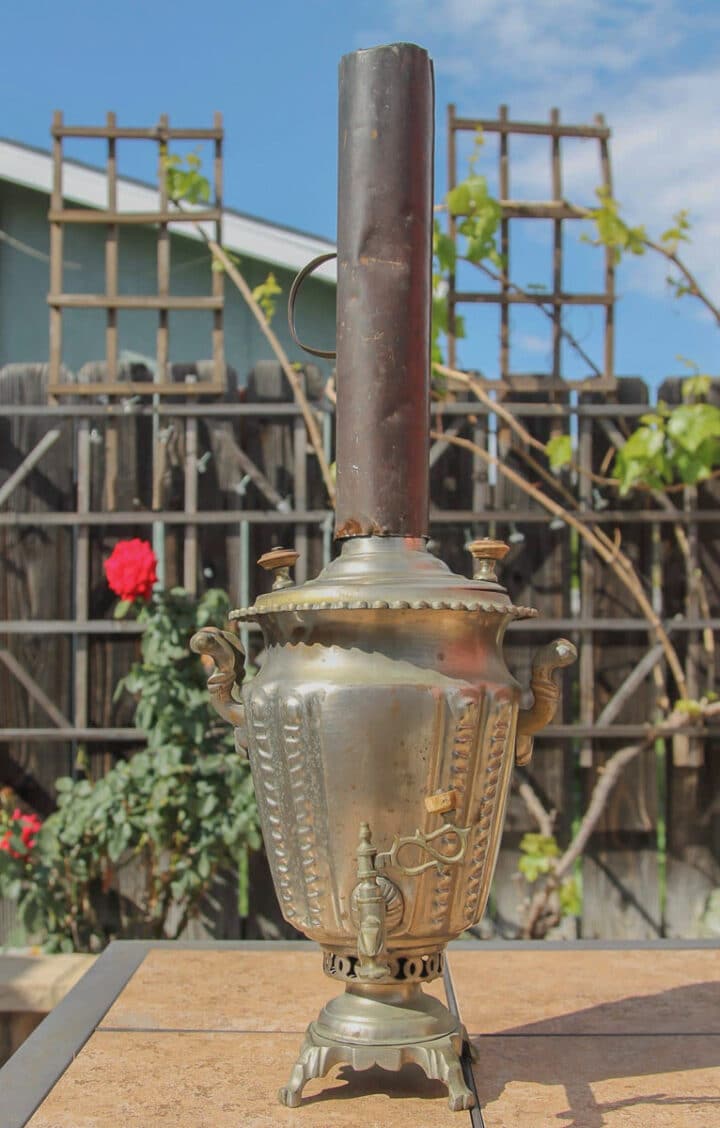
The newer models are heated electrically and have a coil inside that heats up the water. Although they're more convenient, they're not as portable as charcoal samovars.
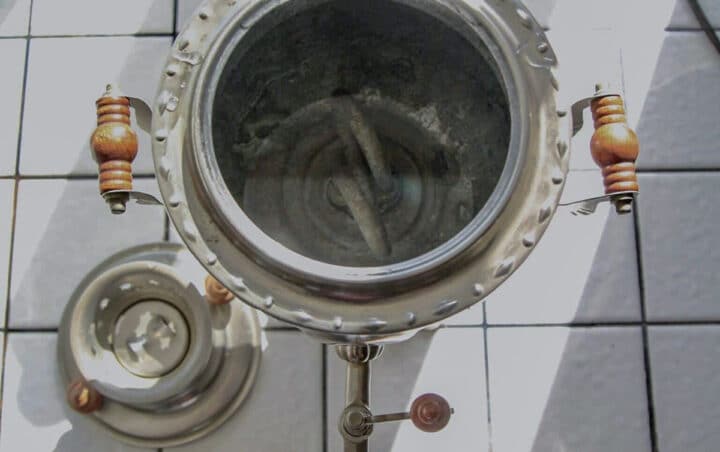
☕️ How to Make Samovar Tea
- Fill the body of the samovar with water. Plug the cord in, and turn on the knob, if your samovar has one. Bring water to a boil. This can take approximately 30 minutes.
- Fill the teapot with the tea, and the cardamom, if using.
- Add boiling water to the teapot.
- Place the filled teapot on top of the samovar. Allow the tea to simmer for at least 15 to 30 minutes.
- Place a strainer over a teacup and pour some of the tea into the cup. The amount will depend on how strong you prefer your tea.
- Finish by filling the cup with enough hot water to achieve the desired tea strength.
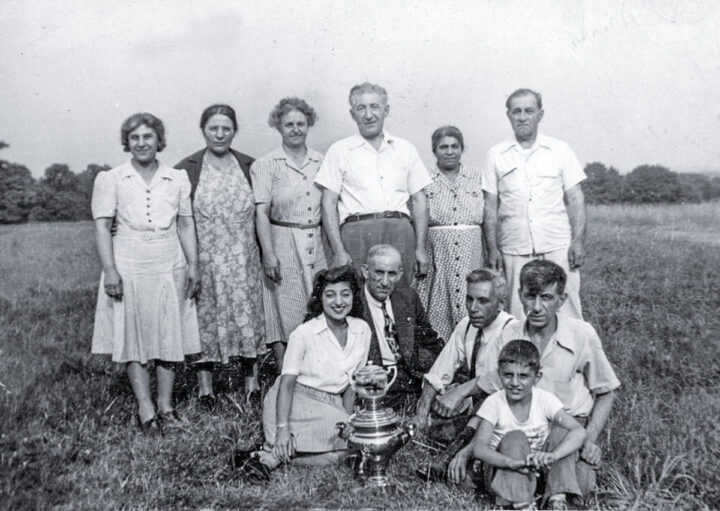
🤷🏻♀️ FAQs
Samovar tea is a delicious loose-leaf tea brewed using a samovar. The original samovars resembled an urn and were usually made with brass. The inside of the urn contained a metal tube which was filled with hot coals.
Surrounding the tube is a chamber that is filled with water. A teapot filled with loose tea is placed on top of the samovar crown. Once the water boils, it is poured from the samovar spout into the teapot and then allowed to steep until the tea is ready to be served.
Since the samovar was heated with charcoal, it made it portable and was often taken to picnics and other outdoor activities.
It originated in Russia but soon became popular in the Middle East as well!
There is something about samovar tea that makes it unique. It could be due to the length of time the tea is brewed, making it richer in flavor. Or maybe it's the smokiness of the charcoal?
More likely, it's the ambiance and flare that comes with enjoying a cup of samovar tea while reminiscing about times gone by with family and friends.
Although not as popular as they once were, samovars are still used in Russia, Eastern Europe, and throughout the Middle East. Samovars are mostly used during large gatherings and are still enjoyed in countries where Russians and Middle Easterners migrated.
Would you like to save this recipe?
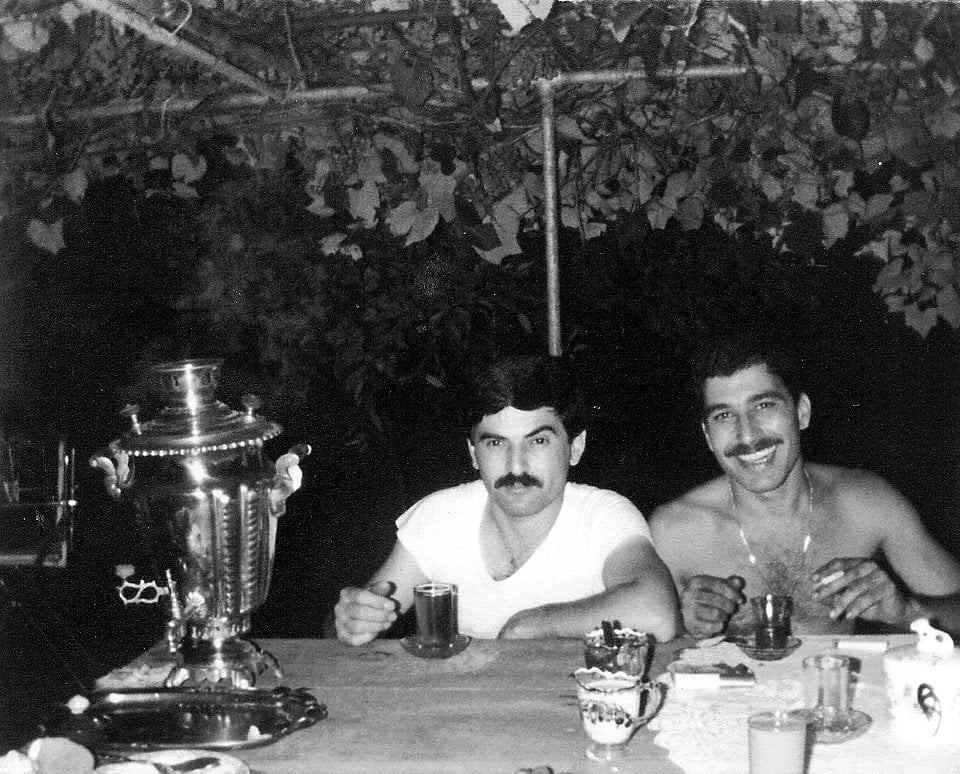
👩🏼🍳 Pro Tips
- Because they are usually manufactured overseas, a lot of the electric samovars need a converter in order to be used in America.
- Samovars are saved for special occasions. They are usually brought out when entertaining a large group.
- For daily use, Assyrians follow the same concept as making samovar tea, but on a smaller scale. A tea kettle is topped with a teapot, which is usually brewed all day Long (see picture below). When unexpected guests arrive, and they always do, tea is ready to be served!
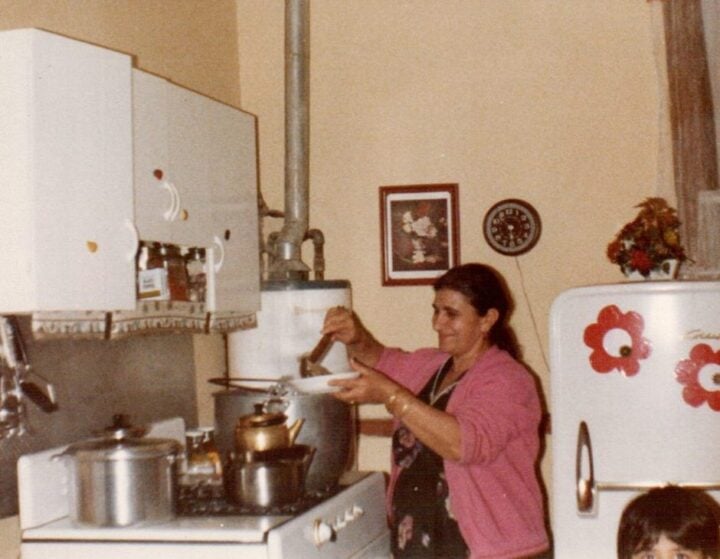
🫖 More Tea Recipes
If you enjoy this samovar tea recipe, check out these other tea recipes!
Don’t forget to check out my Classic Middle Eastern Food Combinations.
📖 Recipe
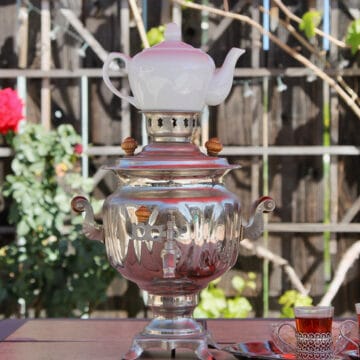
Samovar Tea (Chai it Simawar)
Equipment
Ingredients
- ¼ cup loose earl grey tea
- 3 to 5 cardamom pods (optional)
- water
- Assyrian sugar cubes
Instructions
- Fill the body of the samovar with water. Plug the cord in, and turn on the knob, if your samovar has one. Bring water to a boil. This can take approximately 30 minutes.
- Fill the teapot with the tea, and the cardamom, if using. Add boiling water to the tea pot.
- Place the filled teapot on top of the samovar. Allow to simmer for at least 15 to 30 minutes.
- Place a strainer over a tea cup and pour some of the tea into the cup. The amount will depend on how strong you prefer your tea.
- Finish by filling the cup with enough hot water to achieve the desired tea strength.
Notes
-
-
- Because they are usually manufactured overseas, a lot of the electric samovars need a converter in order to be used in America.
-
- Samovars are saved for special occasions. They are usually brought out when entertaining a large group.
-
- For daily use, Assyrians follow the same concept as making samovar tea, but on a smaller scale. A tea kettle is topped with a teapot, which is usually brewed all day Long (see picture below). When unexpected guests arrive, and they always do, tea is ready to be served.
-

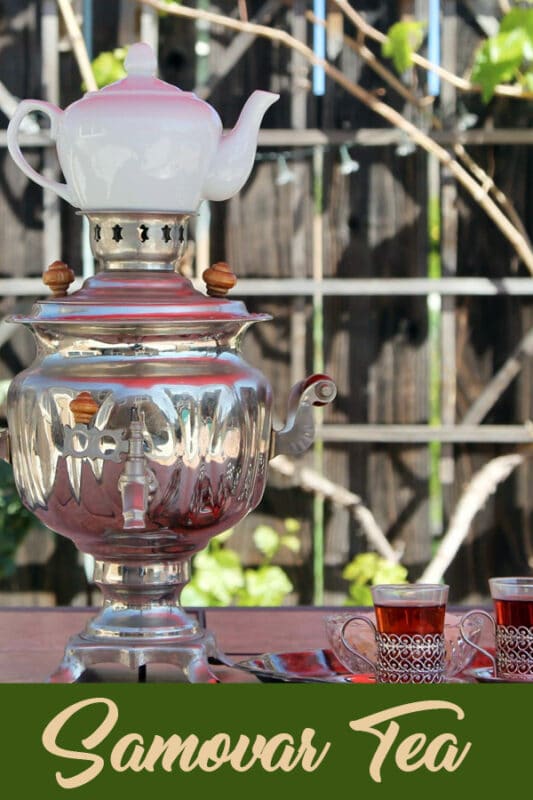


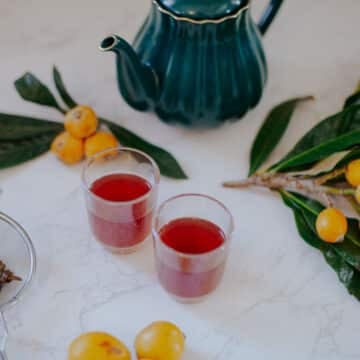
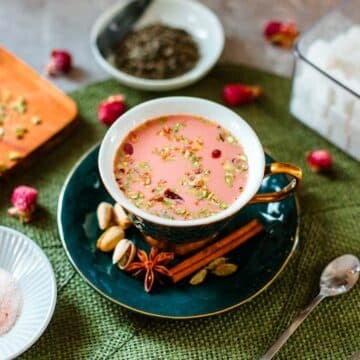
anastaciast says
Shlama!
Thanks for the wonderful history lesson and the great photos!
Sugar cubes were invented in Bohemia after a man's wife cut open her hand using the knife to break up the sugar loaf. Cool, eh?
HildaSterner says
Shlama Anastaciast,
I'm glad you enjoyed the post. As always, I appreciate your comment. Also, thanks for the sugar cube history lesson. I could've used that cool info when I was writing that post. 😉